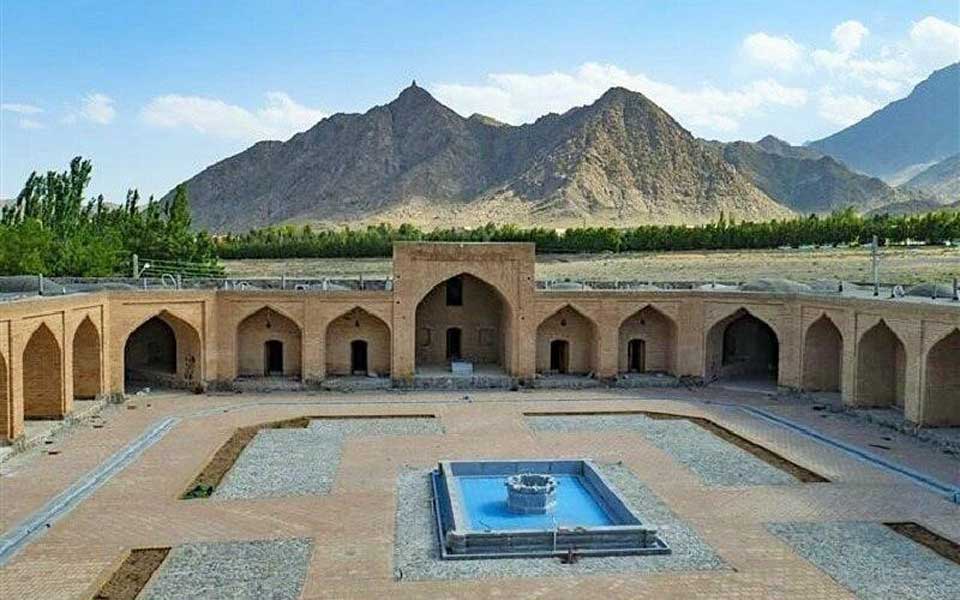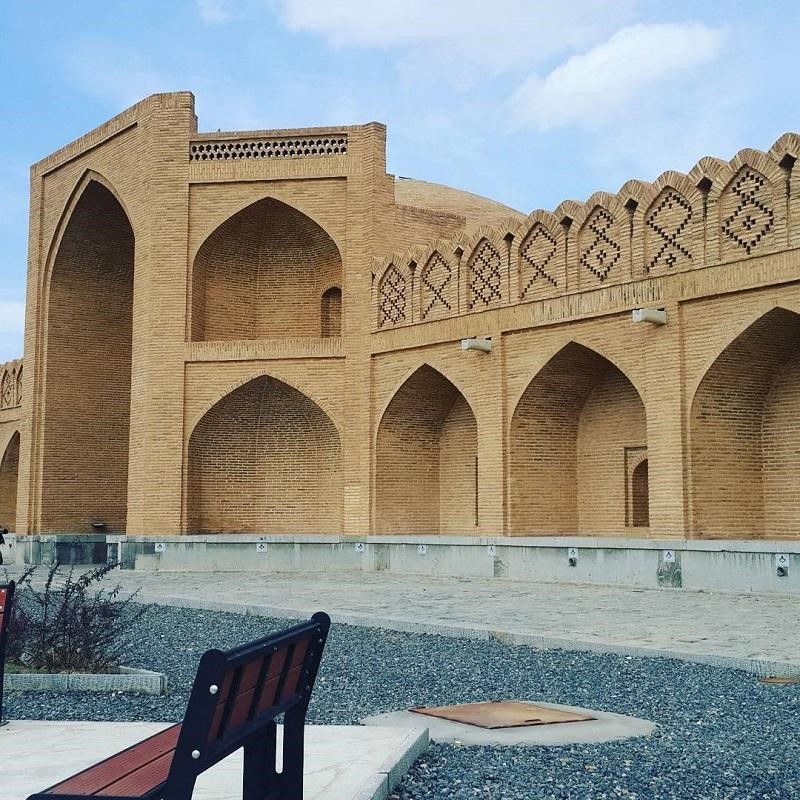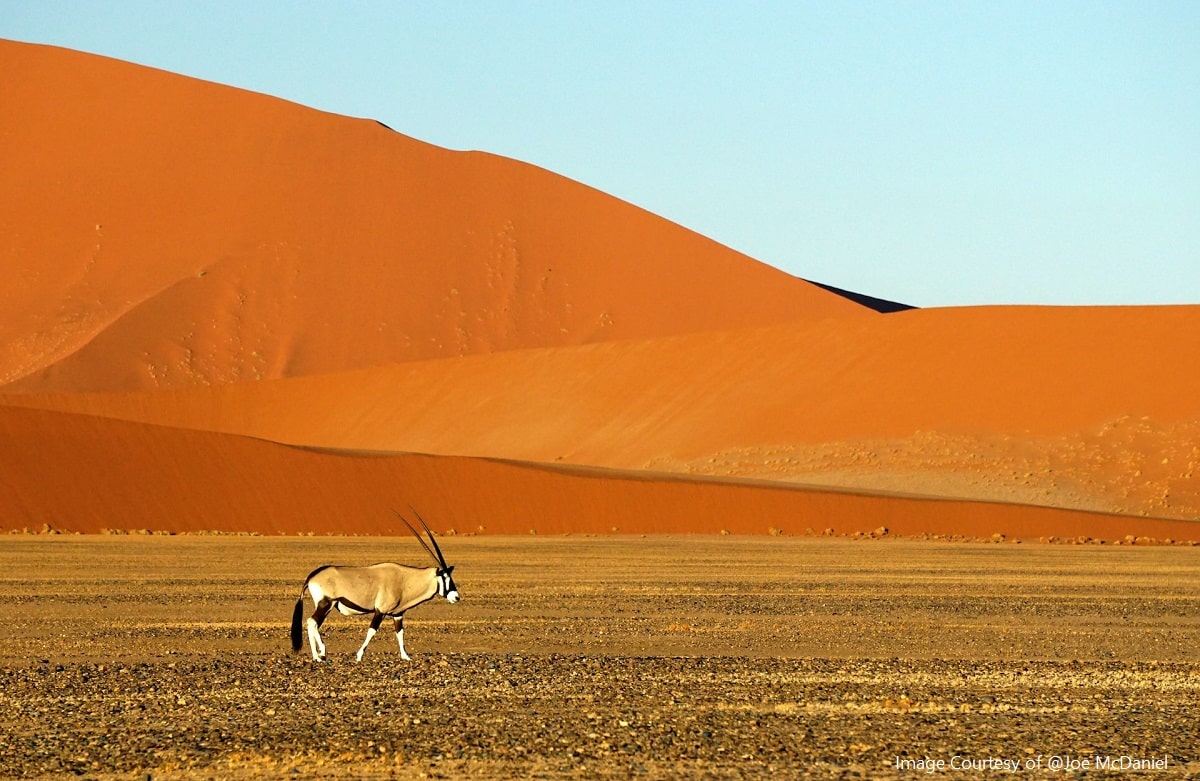
Natanz is one of the beautiful cities of Isfahan province, located in the north of the province. This city has three climate conditions: cold, mild, and desert. Central Natanz has a mild climate and is highly suited for agriculture. That’s why it is known as Bagh-e Shahr (City’s garden). There are a number of historical sites and Natanz tourist attractions in Bagh-e Shahr including Kuhab Caravanserai.
This caravanserai is also known as Robat Kuhab, Kuhab Castle, Natanz Caravanserai, and Abu al Ma’ali Caravanserai. Kuhab Caravanserai is located on Shahid Beheshti Boulevard in Natanz. This historical attraction was listed on the Iran National Heritage List in 1977.
The History of Kuhab Caravanserai in Natanz
This caravanserai dates back to the Safavid era and the time of Shah Abbas I. This landmark was built by a person named Abul Ma’ali Barz-Rudi, which is why it is also called Abul Ma’ali Caravanserai.
Abul Ma’ali was one of the trusted emirs (officials) of Shah Abbas, also known as Agha Mir. In fact, he was a court official and Majles-Nevis (royal historian) of Shah Abbas.
This caravanserai was used by the public until the Pahlavi period. In recent years, the Kuhab Caravanserai complex has been acquired by the private sector. This building is undergoing extensive restoration and may later be converted into a vacation accommodation, a traditional hostel, or a handicraft market.
Features of Kuhab Caravanserai

This caravanserai has an area of about 3962 square meters and is located inside a garden called “Bagh-e Haram” because it’s located near the Haram (shrine) of Imamzadeh Shahzadeh Abdullah. There is a large water fountain in front of the garden. In addition, there is another historical attraction called Gonbad-e Baz on the Shahin peak in the Karkas mountain range, which is visible from this caravanserai.
Kuhab Caravanserai of Natanz has 23 rooms, four Iwans (large halls), a large courtyard, a Jolo-Khan (forecourt), and an entrance portal with a stone inscription. The portal entrance of the Kuhab Caravanserai is very tall. The inscription features the year of the construction of the caravanserai along with its builders written in the Thuluth script.
A heavy wooden door is installed at the entrance. There are stairs around the entrance door that lead to the caravanserai roof. These stairs have platforms for the guards to rest.
In addition, there are guard rooms on the roof of the caravanserai. The rooms were meant for the guards stationed to protect the caravans.
There are 10 Soffeh in the north wing of the Natanz Kuhab Caravanserai, located on both sides of the entrance portal. Soffeh is an Iwan or large hall that has a roof. These 10 Soffeh were utilized when the caravanserai was crowded and all the main building vacancies were filled.
After going through the portal, we face the caravanserai courtyard. There is a large fountain measuring 7×14 square meters in the middle of the courtyard. This fountain was used to supply much-needed water to the caravans.
There are long corridors on the four sides of the courtyard. These corridors are roofed, and there are “Takht-Gah” on the sides that lead to small booths. Takht-Gah are large corridors that are adjacent to the hall. After walking 10 meters, the courtyard corridor splits into two branches to the left and right. The corridor leads to the rooms behind the large Iwan.
There are four Iwans in front of the building of Kuhab Caravanserai in Natanz. Each of these Iwans was associated with the nobles and royalty of the Safavid period.
Inside the caravanserai, there is a large Assar-Khaneh (traditional oil mill) grinding stone. In the past, this grinding stone was used to extract oil. In fact, the lamps that were used to light the caravanserai used oil as fuel. This oil mill was used to supply lamp oil to the caravanserai.
In addition, there are custom stone hitching posts in this caravanserai. This shows that in the past, horses and cattle were kept in the caravanserai. These stone posts were used to hitch horses and cattle.
Visit This Safavid Caravanserai
After sightseeing in different cities, you’ll be looking for a comfortable place to rest. Traditional caravanserai with historic architecture are great tourist accommodations. Visiting the Natanz’ Kuhab Caravanserai from the Safavid Era gives you a glimpse of a traveler’s experience in the distant past.
If you travel to Natanz on an Iran tour package or by yourself, don’t miss visiting this caravanserai. Of course, the caravanserai is currently under renovation. We hope that the restoration of the caravanserai is completed by the time you read this article and you can visit it.
Destination Iran invites you to visit Kuhab Caravanserai of Natanz and other Natanz tourist attractions.
Where is Kuhab Caravanserai?
Kuhab (Kohab) Caravanserai is located on Shahid Beheshti Boulevard in Natanz City. You can see the location of this caravanserai below:
Frequently Asked Questions About Natanz Kuhab Caravanserai
If you cannot find the answer to your questions in the following, share your questions with us through the comments section of this post. We will answer them as soon as possible.
What are the other names of Kuhab Natanz Caravanserai?
Kuhab Caravanserai is also known as “Robat Kuhab”, “Kuhab Castle”, “Natanz Caravanserai” and “Abul Ma’ali Caravanserai”.
How old is the Kuhab Caravanserai in Natanz?
Kuhab Caravanserai dates back to the Safavid era and the time of Shah Abbas I. This landmark was built by Abul Ma’ali Barz-Rudi. For this reason, it is also known as Abul Ma’ali Caravanserai.
What are the architectural features of Kuhab Natanz Caravanserai?
Kuhab Natanz Caravanserai has four Iwans (large halls), a Jolokhan (forecourt), and a portal with a stone inscription. The structure is built from bricks, rip-rap stone, and half-grinded plaster mortar.
How many sections are in the Natanz Kuhab Caravanserai building?
Kuhab Natanz Caravanserai has 23 rooms. There are platforms on the rooftop staircases for the guards to rest, and there are guard rooms on the roof. There are 10 Soffeh (large covered halls) on both sides of the entrance for passengers to rest when the caravanserai rooms are occupied.
There is a large fountain for water supply in the middle of the caravanserai courtyard. There are long covered corridors with Takht-Gah (rest halls) on both sides. There are four Iwans in front of the Natanz Kuhab Caravanserai building, each associated with one of the royal figures of the Safavid dynasty. Inside the caravanserai, there is a large Assarkhaneh (stone mill) stone for extracting oil and stone hitch posts for hitching horses and cattle.













